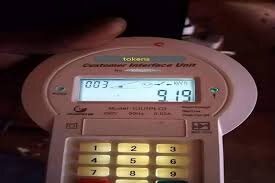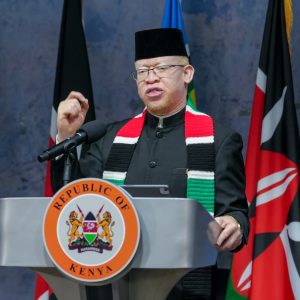Electricity Power Bills to Increase by Sh3 on New Pricing

Electricity bills are set to increase, the Energy and Petroleum Regulatory Authority (EPRA) has announced.
Electricity bills are set to increase by 359 cents, about Sh3.50 per unit as generators factor in production costs.
This comes despite fuel prices dropping and the foreign exchange market being in favour of the Kenyan shilling, which continues to gain against the US dollar.
“Pursuant to clause 1 of Part III of the Schedule of Tariffs 2023, notice is given that all prices for electrical energy specified in Part II of the said schedule will be liable to a fuel energy cost charge of plus 359 Kenya cents per kWh for all meter readings to be taken in June, 2024,” EPRA director general Daniel Kiptoo said in a gazette notice.
Some of the generators whose pricing has increased include Kipevu I Diesel Plant, Kipevu III Diesel Plant, Rabai Diesel without steam turbine, Rabai Diesel with steam turbine and Iberafrica diesel–additional plant.
The increase comes after Kenya Power announced a cut in power bills in April, pegged on fuel cost charges and foreign exchange fluctuation adjustments.
This saw domestic customers consuming less than 30 units per month pay Sh629 in April, compared to Sh729 in March 2024.
Those who consume 60 units saw their bills come down to Sh1,574 from Sh1,773, a 11.2 per cent reduction.
Meanwhile, the Energy Ministry is keen to address system losses that are denying customers lower electricity bills.
Energy Cabinet Secretary Davis Chirchir says Kenya Power has to cut system losses to an average 20 per cent in the short term.
At the moment, losses reported by Kenya Power have remained above the allowed limit as the firm struggles to supply reliable power.
An analysis shows that system losses hit 23 per cent in December last year, meaning that the utility firm lost 1,578.9 Gigawatt-hours (GWh) that it bought between July and December.
EPRA’s benchmark is set at 18.5 per cent.
The losses stood at 23.49 per cent in December 2022, up from 22.43 per cent in a similar period of 2021 and 25.21 per cent a year before.
Africa’s system losses are however averaging 20-40 per cent, meaning Kenya is among the well-performing.
System loss is the difference between total net generation and energy sales on the system expressed as a percentage of net generation. These losses accrue from leakages due to illegal connections or shaky transmission.
Chirchir said the government is determined to double energy efficiency in to help further cut electricity costs.
System losses come from both technical and commercial losses with technical losses being occasioned mainly by an inefficient distribution infrastructure, while commercial losses arise from power theft.
According to Chirchir, doubling energy efficiency will help improve energy security, reduce the expenditure of foreign currency reserves on energy imports, lessen the strain on national grid during peak time and lower the costs associated with emissions.
“As we cut losses we are gearing towards lowering the cost of power because once we lower our distribution and transmission losses, that directly translates through our power bills and that is what energy efficiency is all about,” Chirchir said.
Kenya Power has developed a new Strategic Plan for the period 2023/24 – 2027/28, aimed at among others, reducing system losses by identifying and fixing affected areas.
CS Chirchir said the country needs $5.3 billion (Sh686.2 billion current exchange rate) to overhaul power transmission lines and forestall frequent blackouts.






